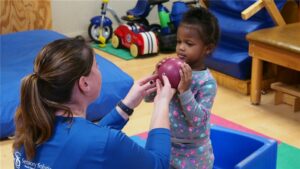Consuming a diet rich in iron is essential to children’s overall growth and development. Dietary iron is needed to make hemoglobin, which carries oxygen in red blood cells to all parts of the body. Iron also supports proper neurological development during infancy and early childhood. A diet deficient in iron can lead to anemia.
Iron-deficiency anemia can be caused by:
· A diet low in iron. Children receive iron from consuming iron-rich foods in their diet.
· Changes that occur in the body. When a child’s body undergoes a growth spurt, more iron is needed to make more red blood cells.
· Gastrointestinal tract issues. Certain gastrointestinal (GI) tract problems could affect the absorption of iron, resulting in iron-deficiency anemia.
Treating iron-deficiency anemia includes:
· Iron supplements*
· Following an iron-rich diet.
Excellent sources of iron include:
· Iron-enriched cereals, breads, pasta, and rice
· Meats, such as beef, pork, lamb, and liver
· Poultry, such as chicken, duck, turkey, (especially dark meat)
· Fish, such as shellfish, including clams, mussels, oysters, sardines, and anchovies
· Leafy greens such as spinach, broccoli, kale, and collards
· Legumes
Enhancing absorption:
Vitamin C can help promote the absorption of iron. Offering your child foods high in vitamin C can help their bodies absorb iron.
Vitamin C rich foods include oranges, orange juice, strawberries, cantaloup, watermelon, mango, pineapple, broccoli, red bell peppers, tomatoes, spinach.
*Disclaimer: please speak with your primary care provider before beginning an iron supplement.


